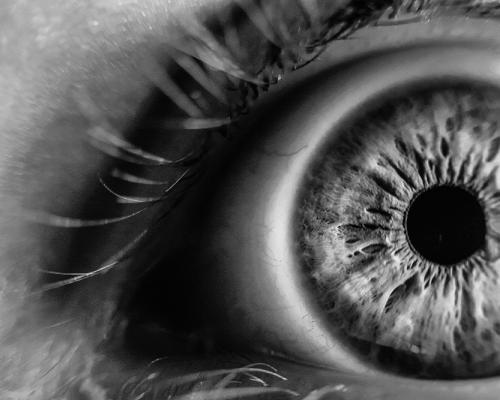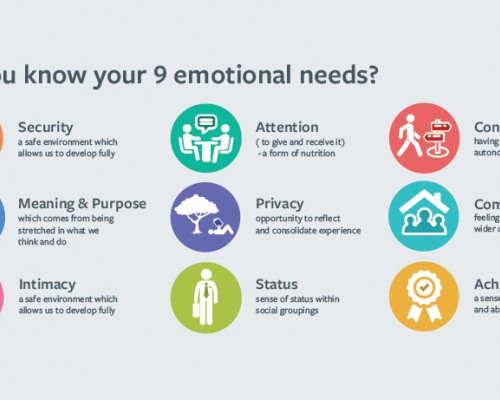How to lift depression quickly and safely
Joe Griffin and Ivan Tyrrell explain how and why the human givens approach can help therapists shift depression in a handful of few sessions — or fewer.
DEPRESSION kills people. The misery it causes can trick people into thinking their lives are hopeless and lead them to suicide. Although not a biological illness, it appears to be 'contagious'.[1] Moreover, people's understanding of it is confusingly coloured by myths: contrary to the hold these have, depression is not caused by a chemical imbalance in the brain; it is not anger turned inward; it does not have to take a long time to come out of; childhood events, from which it make have stemmed, do not have to be explored in forensic detail before progress can be made.
It has long been shown that many therapies, including non-directive counselling and cognitive behavioural therapy, may be no more effective as a treatment for depression than a few short visits to a GP over a twelve month period.[2],[3] And, now that antidepressants have been shown to cause serious side effects,[4] the need for health workers, counsellors and psychotherapists to understand depression and be trained in treating it effectively has never been greater.
The rapid increase in the incidence of depression revealed by epidemiological studies is one of the reasons we know that depression is not a genetic disease. A large body of evidence, published over decades, shows that most depression is learned, brought about by the way we interact with our environment.[5] It is not caused as a result of the specific events we experience — the majority of people exposed to adverse life events do not develop depression — but by the way we respond to them. Further support for this view comes from long-established evidence that depression responds well to certain kinds of therapy or counselling — that which is active, time limited, focused on current problems and aimed at symptom resolution, not personality change.[6]
The human givens approach
The human givens approach to counselling works with what we are all born with — our genetic endowment — namely the physical and emotional needs programmed into us by evolution, which seek their fulfilment through our interaction with the environment, and the innate resources provided to help us meet those needs. When emotional needs are not met or when our resources are used incorrectly, we suffer considerable mental distress — most commonly anxiety and/or depression. Therapy based on the human givens looks for what is missing in people's lives and works towards enabling needs to be met.[7]
The resources which are available to help us do this include the ability to build rapport, empathise and connect with others. Imagination is a resource: one that can allow us to focus our attention away from our emotions in order to solve problems more objectively. We have the rational ability to question, analyse and develop the ability to 'know' — understand the world unconsciously through metaphorical pattern matching.
Central to all these abilities and functions, and in many ways perhaps paramount, is the dreaming brain, which preserves the integrity of our genetic inheritance every night. The role of dreaming is key to a full understanding of depression, and why practical therapies help.
Depressed by dreams
We all dream for about two hours a night, even though we often don't recall having done so when we wake up the next morning. There is evidence to show that the function of dreaming, which occurs predominantly during REM sleep, is the metaphorical acting out (not the resolving) of unexpressed, emotionally arousing preoccupations, so that the arousal can be discharged and the brain freed up to deal with the concerns of the following day.[8] The process of discharging, and thus completing, patterns of arousal in this way preserves the integrity of our core personality.

In depression, however, this process goes dramatically wrong. Instead of having about 25 per cent (REM) sleep and 75 per cent slow wave sleep (which boosts energy levels in the brain), these proportions become inverted, with the majority of depressed people having far too much REM sleep and too little deep sleep. The prolonged negative self-examination and introspection which tends to characterise depressed people creates higher than average arousal levels and greater need for discharge during dreams. The first period of REM sleep occurs much earlier in most depressed people, because the pressure for discharge is so great. The first REM sleep period is also more prolonged and shows an especially high rate of discharge. However, so much discharge activity not only reduces the arousal levels in the brain but also depresses and exhausts it, leaving the dreamer likely to lack motivation the following morning. Indeed, very many depressed people say that they wake up from sleep feeling exhausted.
Experiments in the sleep laboratory long ago showed that, if depressed people were woken every time they go into REM sleep, their depression lifted.[9] Antidepressants also reduce REM sleep, and this is thought to be why they can help to lift depression.[9] Those whose REM sleep goes back to normal are more likely to stay out of depression. (However, there are ways to bring this about without using drugs, as we will shortly show.)
High emotional arousal
A simple saliva or blood sample from a depressed person will show elevated levels of the hormone cortisol, which rises when we have too much stress.[10] Stressful life circumstances cause worry. But, by spending too long on worrying and emotionally arousing rumination, depressed people are misusing the tool of imagination. Unfortunately, all this emotionally arousing introspection not only leads to excessive dream sleep, it also prevents people from seeing their life situations objectively. High emotional arousal inhibits our ability to think clearly, and blocks rational thought.[11]
When we are emotionally aroused, everything seems either black or white, good or bad, right or wrong, safe or dangerous. This is because high arousal locks us into a trance state, a confined viewpoint. We lose access to the parts of the brain that can inject the shades of grey and see the bigger picture.
People who are not habitual black-and-white thinkers can snap out of this emotional trance state fairly quickly. But those who have a tendency towards endlessly analysing the negative aspects of their lives, catastrophising every little setback and conjuring up even more, are especially likely to stay locked in their depressive trance.[12] It has been shown that those who take events most personally (blaming themselves for everything that goes wrong), have a highly pervasive view of how negative an event will be (losing a job or a lover means that their whole life is ruined) and also consider its impact permanent (there will never be another job or lover) are the most likely to suffer from depression.[13]
With a clearer picture of what depression is and what causes it, we can set about lifting it more rapidly.
How to lift depression
The main task in any counselling for depression, which is very commonly accompanied by anxiety, is to lower emotional arousal and help patients stop their negative introspection as quickly as possible. This can be done by drawing on the human givens in realistic, practical ways.
We routinely find that, using a variety of appropriate approaches that are attuned to the human givens, we can make, in one session, much faster progress, even with severe depression, than if we slavishly follow one particular model of therapy.
The approach has been demonstrated publicly and filmed for training purposes many times (also see "I went away with so many ideas").

Therapists working from the human givens approach integrate behavioural, cognitive and interpersonal therapy techniques with relaxation and visualisation techniques, to motivate people to widen their life view, raise their self esteem and solve problems. We can work alongside patients, giving practical guidance for breaking problems down into manageable chunks (focusing their attention outwards on resolution rather than inwards on nonproductive worrying). We can use humour to jerk them out of their black-and-white thinking; we can reframe their negative comments in a novel, positive way; we can inform, set tasks, get patients to exercise, re-engage in fun activities or involve themselves in helping others (again, to direct their attention outwards), rouse their curiosity, and so on.
Crucially, we help them use their imagination in guided imagery to enable them to vividly see themselves making the changes they need to make in order to overcome their difficulties. This works on the time-honoured principle that the human brain tries to bring about what it focuses on. This helps ensure commitment from a client to take actions they need to take to bring themselves out of their exhausted state.
Speedy results
This organic mind/body approach can bring about the remission of depression in a fraction of the time taken by cognitive or behavioural or interpersonal therapy.[14] In our experience, when clients know that their negative ruminations are causing their poor sleep at night and their exhausted days, they are quickly motivated to work to break the cycle of depression.
> Read the related case study of how one session of human givens therapy was sufficient to transform the life of a depressed single mother called Sarah
 Spread the word – each issue of the Journal is jam-packed with thought-provoking articles, interviews, case histories, news, research findings, book reviews and more. The journal takes no advertising at all, in order to maintain its editorial independence.
Spread the word – each issue of the Journal is jam-packed with thought-provoking articles, interviews, case histories, news, research findings, book reviews and more. The journal takes no advertising at all, in order to maintain its editorial independence.
If you find the articles, case histories and interviews on this website helpful, and would like to support the human givens approach – please buy a back issue today.
References
- Yapko, M D (1999). Hand-me-down Blues. Golden Books.
- King, M, Sibbald, B, Ward, E, Bower, P, Lloyd, M, Gabbay, M and Byford, S (2000). Randomised controlled trial of non-directive counselling, cognitive behaviour therapy and usual general practitioner care in the management of depression as well as mixed anxiety and depression in primary care. Health Technology Assessment. 4, 19.
- NHS Centre for Reviews and Dissemination. The University of York. Counselling in primary care. Effective Matters (2001), 5, 2, 1—6.
- See https://rxisk.org/side-effects-of-antidepressants/
- Yapko, M D (1997). Breaking the Patterns of Depression. Doubleday.
- Diagnosis, Vol 2 Treatment Aspect. United States Public Health Service Agency.
- Griffin, J. and Tyrrell, I. (2003, 2013, 2024). Human Givens: An empowering approach to emotional health and clear thinking. HG Publishing.
- Griffin, J (1997). The Origin of Dreams. The Therapist Ltd.
- Vogel, G W (1979). The Function of Sleep. Drucker-Collins et al (eds). Academic Press, New York. 233—250.
- Nemeroff, C B (1998). The neurobiology of depression. Scientific American, 278, 6, 28—35.
- LeDoux, J E (1998). The Emotional Brain. Weidenfeld & Nicolson.
- Griffin, J and Tyrrell, I (2001 edition). Hypnosis and Trance States. European Therapy Studies Institute.
- Peterson, C and Seligman, M E P. Causal explanations as a factor for depression: theory and evidence. Psychological Review, 91. 341—374.
- Griffin, J and Tyrrell, I (2000). Breaking the Cycle of Depression. HG Publishing.
Latest Tweets:
Tweets by humangivensLatest News:
HG practitioner participates in global congress
HG practitioner Felicity Jaffrey, who lives and works in Egypt, received the extraordinary honour of being invited to speak at Egypt’s hugely prestigious Global Congress on Population, Health and Human Development (PHDC24) in Cairo in October.
SCoPEd - latest update
The six SCoPEd partners have published their latest update on the important work currently underway with regards to the SCoPEd framework implementation, governance and impact assessment.
Date posted: 14/02/2024













